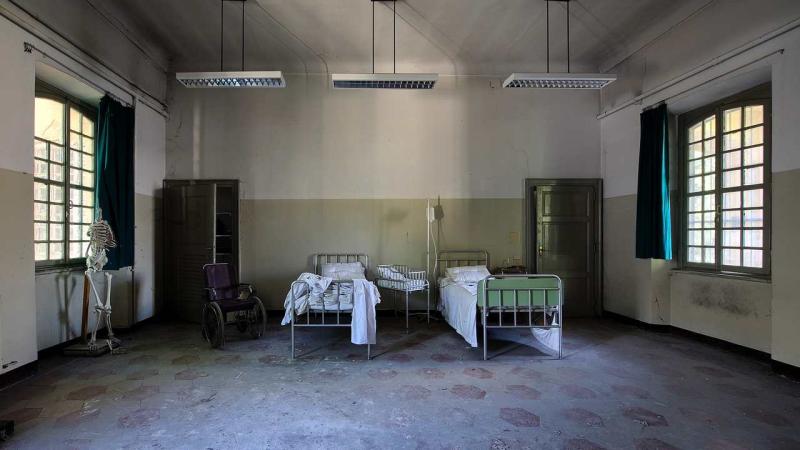
India facing a severe crisis in the availability of skilled healthcare professionals, finds study.
Earlier this year, more than a hundred children died in eastern Bihar due to an encephalitis outbreak. The incident indicates a total collapse of public healthcare systems and the inability of central and state government authorities to deal with such a calamity. The shame is in the fact that it was preventable as this is recorded to be an annual phenomenon, and the ways to deal with it is well documented. Apart from a superior infrastructure to care for the critically ill, the most critical factor in healthcare to prevent such tragedies is the availability of skilled and qualified healthcare professionals. Thousands of deaths could be prevented each year if only we have adept professionals at right place.
A recent study carried out by researchers at the Indian Institute of Public Health (IIPH), Gurugram, highlights a massive shortage of human resources in healthcare in the country. The study, published in the online journal BMJ Open, estimates the size, composition, and distribution of human resource for health across states, rural and urban, and public and private sectors in India as of January 2016. The study finds that India barely meets the World Health Organization's (WHO) minimum threshold of 22.8 skilled health workers per 10,000 population.
The researchers used the 2011-12 National Sample Survey Organization (NSSO) data—a primary source of data on various indicators of the labour force at national and state levels. They used this data and census data to estimate the number of healthcare professionals as of January 2016, and collated it with data of registered professionals including doctors, nurses and other technicians, for the year 2015, from various professional health institutions like Medical Council of India, Indian Nursing Council and Ministry of Health and Family Welfare. They also considered informal medical practitioners including faith healers, snake bite curers and bone-setters. Besides, for the first time, the study quantified non-health workers, like clerks, cashiers and tellers, engaged in the health sector, and registered health professionals who are not working currently.
The study found that based on the registration data, the country has a total health workforce of 38 per 10000 population. This number is comparatively higher than the NSSO data, which claims 29 per 10,000 people, with nurses and midwives forming the most significant percentage of the workforce. The researchers attribute this difference to some registered professionals who are unemployed, migrated out of the country or could be no longer alive.

Health worker density in India according to NSSO and those registered [Data Source]
The distribution of health workers across urban-rural settings was found to be very uneven. Though rural India made up 71% of the total population in 2016, only 36% of all health workers were employed here. Furthermore, less than 30% of the entire workforce is engaged in the public sector.

Distribution of healthcare workers across urban and rural India based on NSSO 2011-12 data [Data Source]
When the data was analysed state-wise, the researchers found that states like Delhi, Kerala, Punjab and Haryana had an exceptional number of healthcare professionals with more than 50 per 10000 population. However, UP, Bihar and other eastern Indian states failed to meet the minimum threshold of 22.8.
"Punjab and Haryana have better healthcare mainly because of high paying capacity of the population. In Kerala, on the other hand, health has been historically a priority," explains Dr Anup Karan from IIPH, who is the lead author of the study. "The best way to strengthen the places with a poor number of healthcare professionals is to strengthen the public health system," he suggests.

State-wise distribution of Human Resource Health for Health (HRH) per 10,000 [Data Source]
An alarming fact revealed by the study is the presence of a large number of unqualified professionals in the workforce. 30% of all health workers, 15% among allopathic doctors, reported their educational level below the higher secondary level. Adjusting for their adequate qualifications reduces the density from 29 to 16 health workers per 10000 population.
"These are quacks that regularly practice medicine. They are often the first point of contact for the disadvantaged section of the society where there is a shortage of qualified doctors," says Dr Anup. The researchers suggest that it is essential to register them as primary medical practitioners and train them to deliver primary services. Besides, they need to be encouraged to refer complicated cases for proper formal treatment.
The study, which is based on the self-reported numbers of registered professionals, could have underestimated or overestimated their count. The data used is also not updated continuously, as it contains all those who died or migrated. "We need to have a regular enumeration of all health professionals in the country," opines Dr Anup. This approach can help to estimate these numbers precisely and equip the government and authorities to handle an outbreak.
The researchers conclude that the country has a considerable problem of distribution and qualification of healthcare professionals. "I think there is a need to open many medical colleges and nursing institute in the central and eastern part of the country," says Dr Anup. He points out that today, most medical and nursing institutions are located in the southern part of the country and metro cities. "Health insurance schemes like Ayushman Bharat may do wonders if implemented properly," he adds.
Unless urgent measures are taken at the state and central level to tackle this issue, more tragedies like Bihar are just waiting to happen.
This article has been run past the researchers, whose work is covered, to ensure accuracy.





